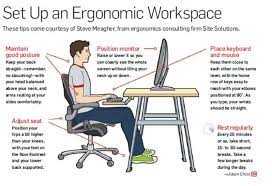Introduction
In the modern workplace, the focus on employee well-being and productivity has become paramount. With an increasing number of people spending long hours at their desks, the importance of ergonomic furniture and design cannot be understated. One of the most significant standards in this regard is the ANSI/BIFMA X5.41 Ergonomic Guidelines. This article delves into the essential aspects of this standard, exploring its purpose, guidelines, benefits, and its impact on the workplace.
Understanding ANSI/BIFMA X5.41
What is ANSI/BIFMA X5.41?
The ANSI/BIFMA X5.41 Ergonomic Guidelines is a set of industry standards developed by the American National Standards Institute (ANSI) and the Business and Institutional Furniture Manufacturers Association (BIFMA). It focuses on establishing criteria and guidelines for the design and evaluation of office furniture, ensuring they meet ergonomic principles.
Purpose of ANSI/BIFMA X5.41
The primary purpose of ANSI/BIFMA X5.41 is to enhance the comfort, safety, and overall well-being of individuals who use office furniture regularly. It provides manufacturers, designers, and employers with comprehensive guidelines to create products that support natural body movement and reduce the risk of musculoskeletal disorders.
Importance of Ergonomics
Ergonomics is the science of designing products and environments to fit the capabilities and limitations of the human body. In the context of office furniture, ergonomic design aims to reduce physical strain and discomfort, leading to increased productivity and reduced workplace injuries.
Key Ergonomic Guidelines in ANSI/BIFMA X5.41
To ensure that office furniture meets ergonomic standards, ANSI/BIFMA X5.41 outlines several essential guidelines:
Height Adjustments
Office chairs and desks should allow users to adjust the height to maintain proper posture and reduce strain on the neck and back.
Seat Depth and Width
Seats should have adequate depth and width to accommodate different body sizes comfortably.
Lumbar Support
Chairs should provide proper lumbar support to maintain the natural curve of the spine and reduce lower back pain.
Armrest Adjustability
Armrests should be adjustable to support the arms at a comfortable angle and prevent tension in the shoulders and neck.
Backrest Tilt
The backrest should have a tilt feature to allow users to recline slightly, promoting blood flow and reducing pressure on the spine.
Swivel Mechanism
Chairs should have a swivel feature to enable easy movement and access to different areas of the workspace without straining.
Stability and Durability
Furniture should be stable and durable to ensure long-term usability and safety.
Testing and Compliance
Products should undergo rigorous testing to meet ANSI/BIFMA X5.41 standards and receive certification for compliance.
Benefits of Adhering to ANSI/BIFMA X5.41 Guidelines
Adhering to ANSI/BIFMA X5.41 guidelines offers several benefits to both employers and employees:
Improved Comfort
Ergonomic furniture promotes better posture and reduces discomfort, leading to improved employee comfort throughout the workday.
Enhanced Productivity
Comfortable employees are more focused and productive, leading to increased overall workplace efficiency.
Reduction of Musculoskeletal Disorders
By following ergonomic guidelines, the risk of musculoskeletal disorders and associated healthcare costs can be significantly reduced.
Employee Satisfaction and Retention
Providing a comfortable and safe work environment can boost employee satisfaction and contribute to higher retention rates.
Implementing ANSI/BIFMA X5.41 in the Workplace
To fully realize the benefits of ANSI/BIFMA X5.41, its implementation should be comprehensive and include:
Inclusion in Office Furniture Design
Manufacturers and designers must integrate ergonomic principles from the early stages of office furniture design.
Training and Education
Employees should receive training on the proper use of ergonomic furniture to maximize its benefits.
Ergonomic Assessments
Conducting ergonomic assessments of workstations can identify potential issues and help make necessary adjustments.
The Future of ANSI/BIFMA X5.41
As workplace dynamics continue to evolve, so will the ANSI/BIFMA X5.41 Ergonomic Guidelines:
Evolving Guidelines
The standard is likely to evolve with advancements in research and technology to address emerging ergonomic challenges.
Technological Advancements
Incorporating innovative technologies in office furniture may further enhance ergonomic design and user experience.
Conclusion
The ANSI/BIFMA X5.41 Ergonomic Guidelines play a vital role in creating a healthier and more productive work environment. By adhering to these guidelines, employers demonstrate their commitment to the well-being of their employees and set the stage for improved productivity and job satisfaction.








